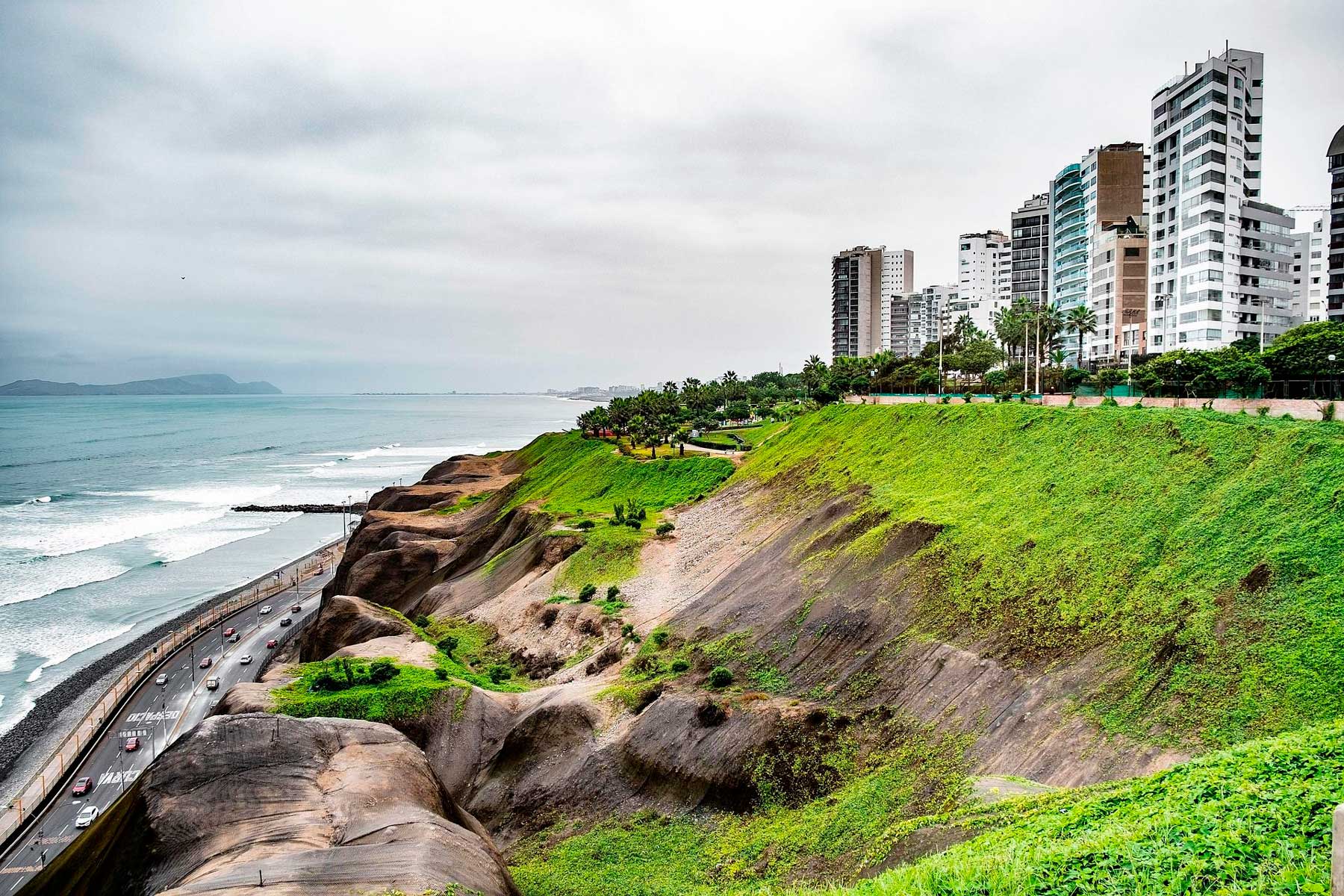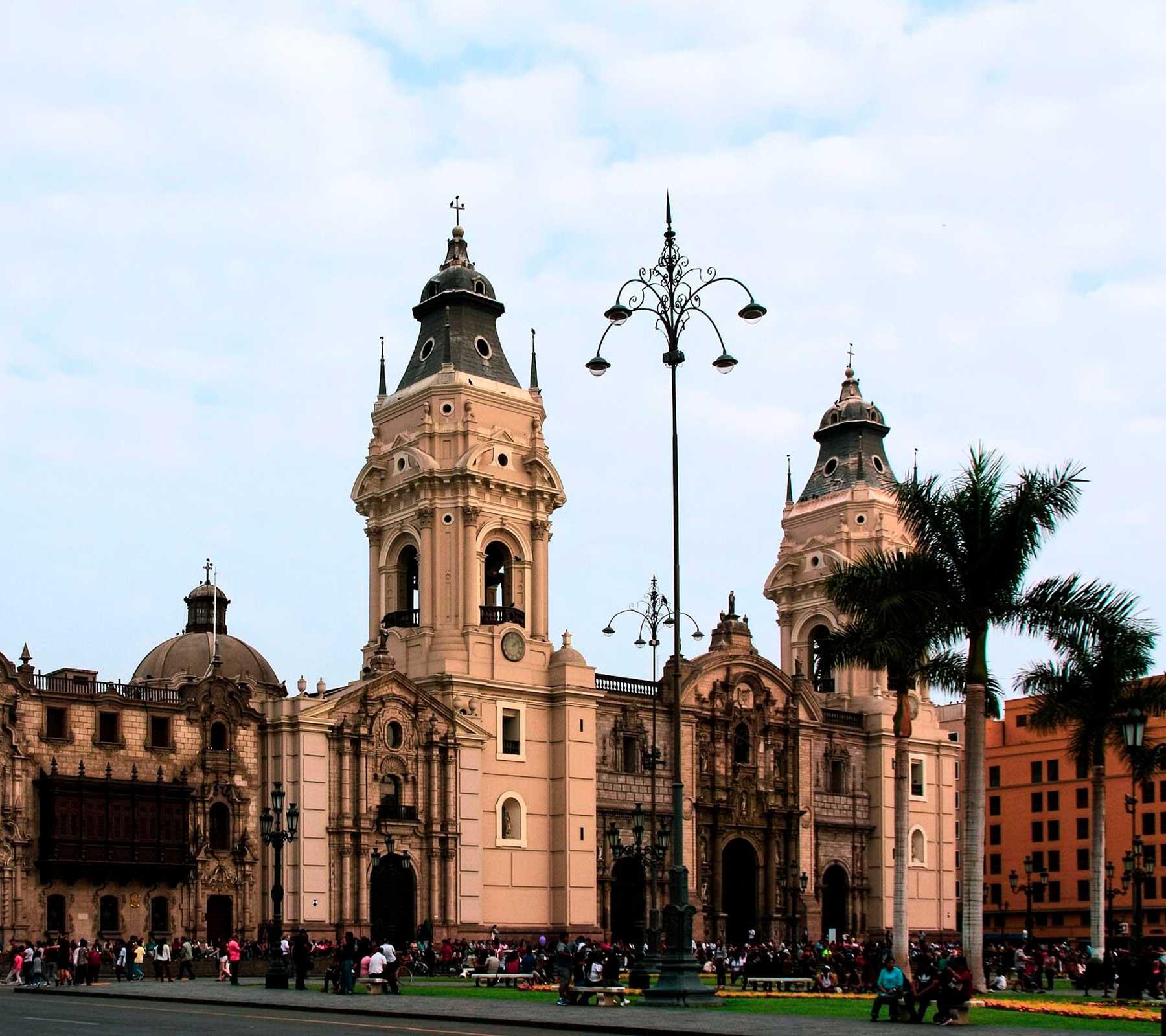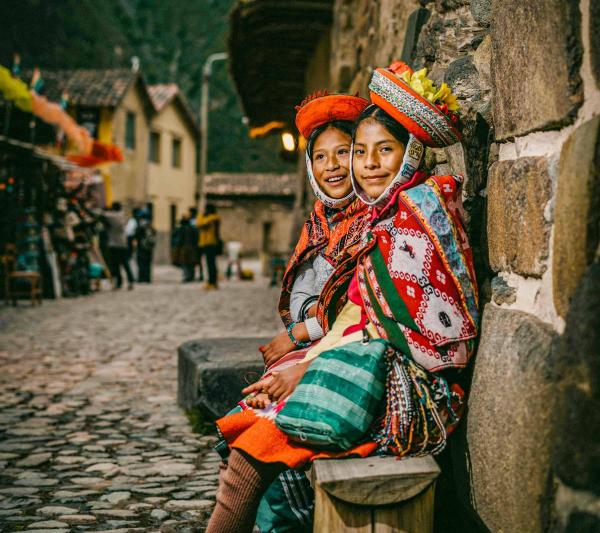Lima, Peru: Everything You Need to Know About the Capital City
Lima, the capital of Peru, preserves the essence of its historical past while embracing modern life. During the winter, the city is often shrouded in clouds, accompanied by frequent drizzle and cool nights. Humidity and fog from the Pacific Ocean create a damp, penetrating chill that defines the coastal climate of Lima.
In summer, the city transforms. Clear skies reveal stunning views of the horizon, and a refreshing sea breeze provides relief from temperatures that can reach 86°F (30°C) during the day.
Lima is a sprawling metropolis that combines modern avenues with charming, quiet corners nestled among colonial-era buildings. At night, the air carries a distinctive coastal scent that adds to the city’s tranquil atmosphere.
As of the 2023 census, Lima has a population of approximately 10.4 million. The Peruvian capital, known as Metropolitan Lima, is made up of 43 districts, each with its own unique character and charm.
Lima Population
Lima, the capital of Peru, has a population of about 10.4 million. The city is home to about a quarter of the country’s total population and reflects Peru’s remarkable ethnic and cultural diversity. The city’s growth is largely the result of rural migration over the past several decades, particularly since the 1960s.
At the beginning of the republic, Lima's population was primarily composed of people of Spanish, mestizo, Amerindian, and African descent from the viceroyalty period. After the Republic was established, the city became a destination for European immigrants, mostly Italian, British, French, German, and other Central Europeans. Later, toward the end of the nineteenth century, Asian immigrants, particularly Chinese and Japanese, arrived, further enriching the city’s cultural and ethnic landscape. Today, Lima is the 27th most populous city in the world.
The descendants of Europeans are an economically influential segment of Lima’s population and actively participate in the city’s industrial and financial sectors. Most of them trace their ancestry to Spaniards and Italians, though there are also notable communities of Germans and other Central Europeans. Afro-Peruvians, who were originally brought to the region as slaves, remain an important group, small in number but significant in cultural influence.
During the 20th century, Lima became home to growing Asian communities, particularly Japanese and Chinese. The Japanese community in Lima is the second largest in South America, after São Paulo. However, the majority of Lima’s population today consists of mestizos, who are descendants of migrants from other parts of Peru who arrived from the mid-20th century onward.
A 2013 survey by the Institute of Public Opinion at the Pontifical Catholic University of Peru found that 63% of 503 respondents identified as mestizo, 22% as Amerindian (including Quechua, Amazonian, and Aymara peoples), 7% as white, 4% as Afro-Peruvian, and 1% as Asian. Three percent did not specify or identified with other groups.

the Capital of Peru
One theory about the origin of the city's name is that it comes from the Quechua word limaq. It means "he who speaks" or "he who has the ability to speak." However, according to this theory, the name does not refer to the inhabitants of Lima, Peru, but rather to the Rímac River. The Rímac River is known as "the talkative river" because the stones dragged along its channel generate a sound similar to babbling.
Lima, the capital of the Republic of Peru, was founded in 1535. Spanish conquistador Francisco Pizarro chose Lima as the capital due to its strategic location and its main port, Callao, a focal point on the Peruvian and South American coast. Lima was the Spanish political, commercial, and ecclesiastical capital of South America, as well as the headquarters of the Holy Inquisition. During colonial times, the city was considered the most important metropolis in Latin America.
Today, Lima is the economic and political center of Peru and home to nearly 30% of the country's population. The city's surviving colonial and pre-Columbian buildings, along with its temples, give it a wonderful architectural blend. You can appreciate this blend by visiting landmarks such as the cathedral, Torre Tagle Palace, and the churches of San Francisco, Santo Domingo, San Pedro, and Las Nazarenas, as well as the beautiful nineteenth-century houses with stunning balconies in the city center. On the way to Miraflores, another important area of the city, you'll find the impressive pre-Columbian ceremonial complex Huaca Pucllana. Many consider it an excellent starting point for a tour.
Where Is the Capital of Peru Located?
Lima, Peru's capital, is located in the coastal desert region at the foot of the western slopes of the Central Andes. The original Spanish settlement was established in the Rímac River Valley within the Taulli Chugo domain. Since then, the city has expanded across vast desert plains and into surrounding valleys. The Main Square (Plaza Mayor) sits at an altitude of 161 meters (531 feet) above sea level, while the district of Lurigancho reaches up to 950 meters (3,117 feet).
Lima’s territory stretches along the coast from kilometer 50 of the North Pan-American Highway, near the Ancón district on the border with the province of Huaral, to kilometer 70 of the South Pan-American Highway, bordering the province of Cañete. This gives the city over 130 kilometers of coastline featuring numerous beaches and seaside districts. To the east, Lima extends to approximately kilometer 50 of the Central Highway in the district of Chosica, bordering the province of Huarochirí.
How to Get to the Capital of Peru
Flights to Lima:
Lima, Peru's capital, has only one international airport: Jorge Chávez International Airport. It is located in Callao, within the Constitutional Province of Callao. The airport is about 10–12 kilometers from downtown Lima and 21 kilometers from Miraflores.
The airport receives daily international flights from major cities in North and South America, as well as Europe. You can also take domestic flights from Jorge Chávez International Airport to the most important cities in Peru. The busiest route is from Lima to Cusco, with around 35 daily departures. Other popular destinations include Arequipa, Iquitos, and Trujillo.
Ground Transportation to Lima:
Lima is connected to several Peruvian and international cities by major highways. The Pan-American Highway links Lima with many coastal cities in Peru, Ecuador, and Chile. To the east, the Central Highway connects Lima with cities in the Peruvian jungle and serves as a route toward Brazil.
Travelers coming from Bolivia can reach Lima via the Desaguadero or Copacabana routes.
Arriving by Sea
Cruise ships dock at the Port of Callao, Peru's main maritime terminal. From there, visitors can easily transfer to central Lima or other nearby districts depending on their cruise itinerary.
If you plan to travel to Machu Picchu, it is important to organize your transportation in advance, as many travelers begin their journey there from Lima.
Weather in Lima Peru
The weather in Lima, Peru is unique due to its geographical location. It combines a virtual absence of precipitation with very high humidity and persistent cloud cover. Although located in a tropical zone at 12 degrees south latitude and almost at sea level, Lima surprises with its unusual characteristics. The central coast of Peru has a series of atypical microclimates due to the influence of the cold Humboldt Current from Antarctica, the proximity of the mountain range, and its tropical location, giving Lima a subtropical, desert, and humid climate at the same time.
It can be said that the weather in Lima, Peru is warm without excessive tropical heat or extreme cold that requires heating at home, except for very few winters. The average annual temperature ranges from 18.5 to 19°C, with an annual maximum of about 29°C. Summers, from December to April, have temperatures between 28 and 21 °C. Only during an El Niño phenomenon does the summer temperature exceed 31°C. Winters, from June to September, have temperatures between 19 and 12 °C, with historically recorded lows of 5 °C. The months of spring and fall (September, October and May) have mild temperatures ranging from 23 to 17°C.
In addition, relative humidity is extremely high, reaching up to 100%, resulting in persistent fog from June to December until the arrival of summer, when the clouds dissipate. Summers are sunny, humid and hot (December-April), while winters are cloudy and moderate (June-September). Rainfall is almost nonexistent, with an annual average of 7 mm, which is the lowest of any metropolitan area in the world. Lima receives only 1,284 hours of sunshine per year, with 28.6 hours in July and 179.1 hours in January, which are exceptionally low for its latitude.
The combination of these climatic phenomena is shown below:
| Weather |
Station |
Min Temp. |
Max. Temp |
Humidity |
| Summer (January - March) |
Warm |
21 °C |
30° C |
70% |
| Fall (April - June) |
Cold |
17° C |
22° C |
80% |
| Winter (July - September) |
Cold |
14° C |
18° C |
95% |
| Spring (October - December) |
Warm |
17° C |
24° C |
80% |
Read More: Weather in Lima Peru
Top Things To Do In Lima
Intense cultural activities and entertainment have characterized this city since the sixteenth century, and now he offers a number of museums and art galleries, as well as modern shopping centers and nightlife. Another interesting aspect of the city is its rich ethnic fusion that can be seen in his witty and funny people, in the tradition of the Lord of Miracles (Lord of Miracles), and also the wide range of culinary options.In 1991 UNESCO declared Lima Monument history of mankind, so the opportunity to visit this wonderful city is not lost.
Take a delicious Lima Tasty Tours:
Gastronomic visits that reveal Lima as the locals know it, with many samples in the markets. It offers a friendly relationship with customers, personalized options and internal access to less known culinary treasures. Tours are available in English.
Visit the archaeological complex of Pachacamac:
Located about 31 km southeast of the city center, the archaeological complex of Pachacamac is a pre-Columbian citadel with adobe and stone palaces and temple pyramids.
Explore the Museum Larco:
In a mansion of the viceroy of the eighteenth century, this museum offers one of the largest and best presented ceramic exhibits in Lima. Founded by the pre-Columbian collector Rafael Larco Hoyle in 1926, the collection includes more than 50,000 pots, with ceramic works from the Cupisnique, Chimú, Chancay, Nazca and Inca cultures.
Drop in the Church of Santo Domingo:
It is known as the final resting place for three important Peruvian saints: San Juan Macías, Santa Rosa de Lima and San Martín de Porres (the first black saint of the continent). The convent, an extensive complex full of courtyards lined with baroque paintings and clad in ancient Spanish tiles, contains the tombs of the saints.
The Best Tours from Lima
Traveling to Peru awakens dormant dreams and connects you with yourself and 5,000 years of living history. Get ready to ride the waves on totora rafts and surfboards, and enjoy sunsets in oases surrounded by protective dunes. In the mountains, the sound of quenas in the wind will accompany you as you breathe the pure air of the Andes and contemplate the harmony of man and nature in Machu Picchu. In the Peruvian jungle, the Amazon River will greet you with pink dolphins and invite you to dance and be free. Crossing Peru's regions means enjoying mestizo gastronomy, which is unique and recognized worldwide. If your heart says yes, dare to visit.






